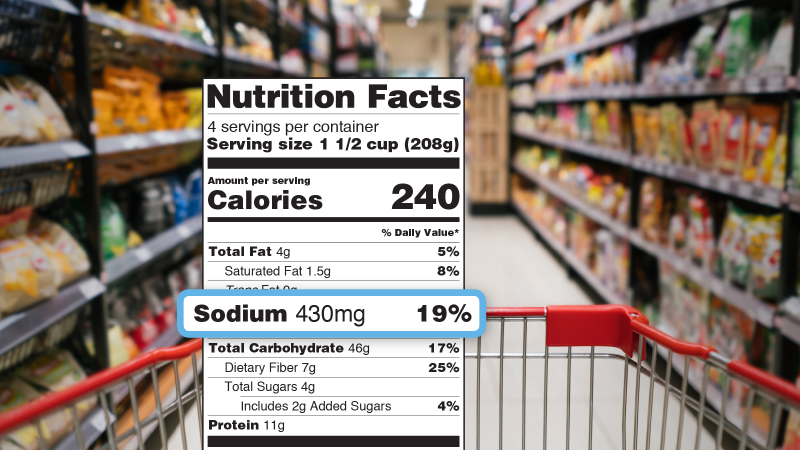 Center for Food Safety and Applied Nutrition FDA Issues Sodium Reduction Final Guidance October 13, 2021 Today, the U.S. Food and Drug Administration (FDA) is issuing final guidance for the food industry that provides voluntary, short-term (2.5 year) sodium reduction targets for a broad range of processed, packaged and prepared foods to help reduce the amount of sodium in the U.S. food supply. Sodium reduction is a critically important public health issue because Americans consume on average 50% more than the recommended limit for those age 14 years and older. This includes our youngest and most vulnerable populations, with more than 95% of children aged 2 to 13 years old exceeding recommended limits of sodium for their age groups, which could have profound impacts on later health outcomes. Too much sodium can increase the risk for developing hypertension, which, in turn, raises the risk for heart attacks and strokes. In the U.S., diet-related chronic diseases are the leading cause of death and disability. Additionally, these chronic diseases are experienced disproportionately by racial and ethnic minority groups. For example, more than 4 in 10 American adults have high blood pressure and that number increases to almost 6 in 10 for non-Hispanic Black adults. Reducing sodium across the food supply is a significant step in the FDA's efforts to help reduce the burden of diet-related chronic diseases and advance health equity by creating a healthier food supply. The targets in the guidance are designed to support decreasing average daily sodium intake by about 12%—from approximately 3,400 milligrams (mg) to 3,000 mg per day. This reduction is expected to result in tens of thousands of fewer cases of heart disease and stroke and billions saved in healthcare costs. The FDA believes these targets are feasible to achieve in two and a half years and covers both manufactured foods and foods prepared by commercial establishments, such as restaurants. About 70% of the sodium consumed in the U.S. comes from packaged, prepared and restaurant food, so successful sodium reduction depends on reducing sodium broadly and gradually across the food supply. The sodium guidance released today finalizes in part a draft guidance from 2016 that provided short-term (2-year) and long-term (10-year) targets for sodium content in commercially processed, packaged and prepared foods. The FDA received about 200 comments on the draft guidance. The FDA has modified the voluntary sodium targets, timeframe, certain food categories and descriptions in the final guidance. The guidance extends the milestone date for the short-term goals from 2 years in the draft guidance to 2.5 years from the publication of the final guidance. The FDA is not finalizing the long-term (10-year) sodium reduction targets. The agency will continue its dialogue with industry, monitor and evaluate progress in achieving the short-term targets and expects to issue revised subsequent targets in a few years and continue a gradual, iterative process to reduce sodium intake. This voluntary, iterative approach is similar to approaches successfully implemented in other countries. For additional information, please see the statement from the FDA's Acting Commissioner, Janet Woodcock, M.D., and the director of the FDA's Center for Food Safety and Applied Nutrition (CFSAN), Susan Mayne, Ph.D. |
No comments:
Post a Comment